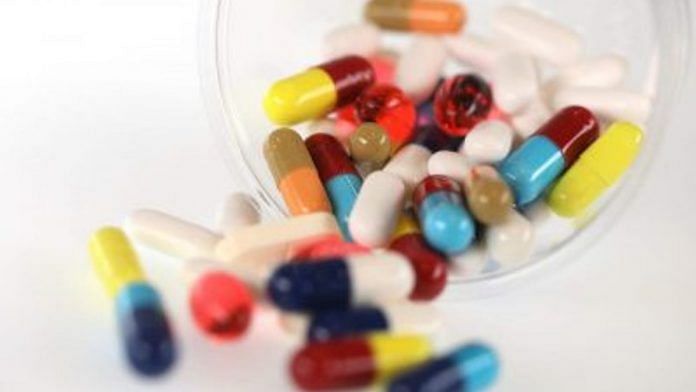New Delhi: India’s intellectual property (IP) and patents regime continue to be matter of concern for the US industry even as they are wary of measures such as price control and compulsory licensing, especially in the area of medicine and medical devices, said a new report.
“India has continued to remain a promising yet challenging market for international IP-intensive industries. India’s National IP Policy does not yet do enough to strengthen the generation of IPRs, guarantee their reliability, facilitate commercialisation, nor provide deterrent-level enforcement,” Patrick Kilbride, senior vice-president (International), Global Innovation Policy Center (GIPC), a body under the US Chamber of Commerce, told ThePrint.
Kilbride was speaking on the occasion of the release of seventh edition of the International IP Index by GIPC, in which India ranked 36th out of 50 countries, climbing eight places from 44th in 2018.
The index, released annually, benchmarks the IP framework in 50 global economies. For the last six years India had been ranking poorly, securing positions only at the bottom.
Within Asia, countries that ranked better in 2019’s edition were Singapore, China, Japan, Malaysia, South Korea, Taiwan, New Zealand, Australia and Brunei.
In an effort to strengthen the country’s IPR regime, India had rolled out the National IP Policy in May 2016. However, countries such as the US continue to complain that it lacks the teeth required to strengthen the generation of IPs or facilitate its commercialisation.
Also read: US Ambassador speech on India US relations at Carnegie India
Compulsory licensing, price control measures
One of the main concerns of the US industry within the National IP Policy is that of compulsory licensing on patented drugs and price control of drugs and medical devices.
The policy does not have a provision which states that India will not be using compulsory licensing indiscriminately for commercial reasons.
“While the Government of India took positive steps with incremental reforms to the country’s IP framework, several serious concerns remain unaddressed. While no additional compulsory licenses for bio-pharmaceuticals were issued by Indian authorities in 2018, industry continues to be concerned by the potential threat of compulsory licensing,” Kilbride said.
Compulsory licensing is a flexibility given to developing countries under the World Trade Agreement (WTO)’s agreement on intellectual property or the TRIPS (Trade-Related Aspects of Intellectual Property Rights) Agreement. Under the provision, countries are allowed to produce a patented product or process without the consent of the patent owner, or plans to use the patent-protected invention itself.
Kilbride also highlighted that statements by Indian officials at international organisations in support of the findings of the UN High Level Panel on Access to Medicines, which called for broad use of TRIPS flexibilities to support routine use of compulsory licenses in non-emergency situations, are “highly concerning”.
So far, India has used the provision of compulsory licensing only once.
In 2012, the then UPA government issued compulsory licensing to NATCO to sell a generic version of German drug maker Bayer’s anti-cancer drug Nexavar. This allowed NATCO to manufacture and sell the generic version of Nexavar, Sorafenib, for Rs 8,880 compared to Bayer’s that cost Rs 2,84,428.
“The government’s resort to price controls on innovative products will be politically-corrupting and economically-disruptive; they are anathema to private investment. Our experience shows that countries that utilise price controls have less access to a range of innovative products,” Kilbride said.
“If every country resorted to price controls, it would have a chilling effect on global investment in innovation.”
Under Prime Minister Narendra Modi, the government has resorted to several price control measures, especially for drugs and medical devices.
Also read: What Monsanto’s seed patent victory in Supreme Court means for India’s farmers
Special 301 report
The GIPC report, which is largely seen as a precursor to the annual Special 301 Report issued by the Office of the US Trade Representative (USTR), also noted that India has high rates of substandard and counterfeit medicines, online and physical piracy and counterfeiting.
The report also highlighted that one of the main areas of “growing concern” has been long pendency in the Indian judicial system.
The Special 301 Report is usually released in April under which the US government categorises countries as per their IP regime. For decades, India has been falling under the category of those countries that have a poor IPR regime. In the report, the US also has provisions for imposing trade sanctions on countries that have extremely weak IPR environment that is detrimental to American companies.
India performed better this year mainly due to tax incentives given by the government for creation of IPs and accession to the World Intellectual Property Organisation’s Internet Treaties in September last year.



